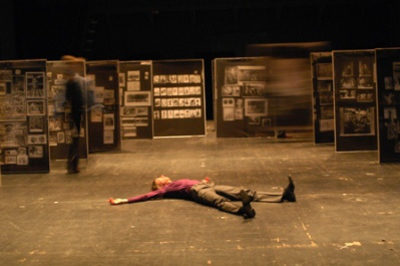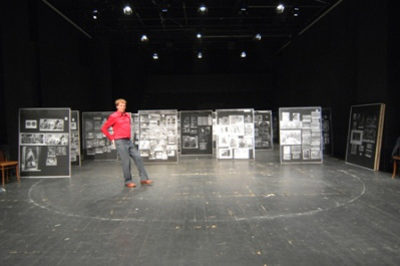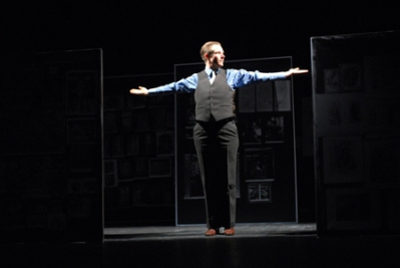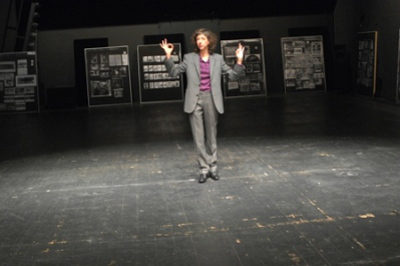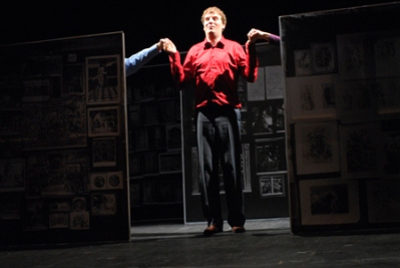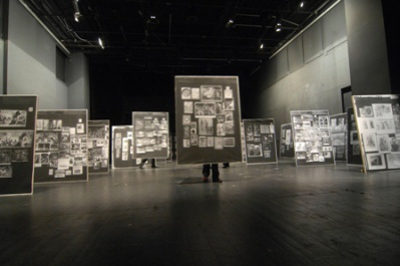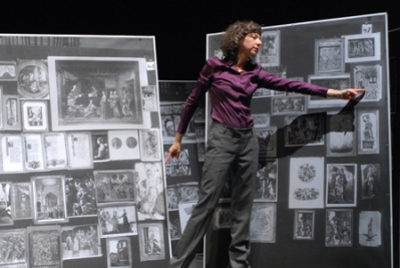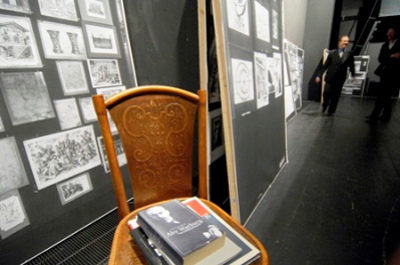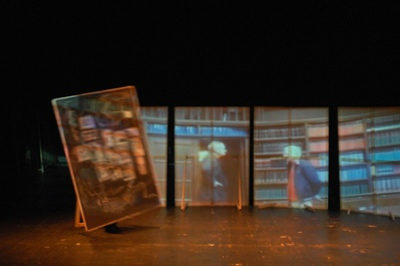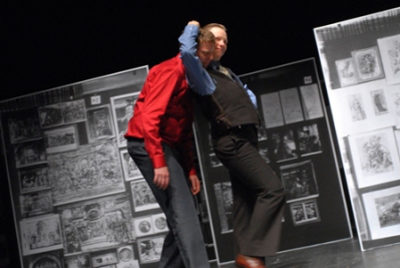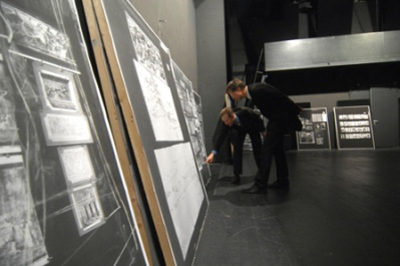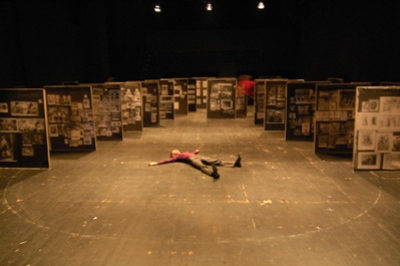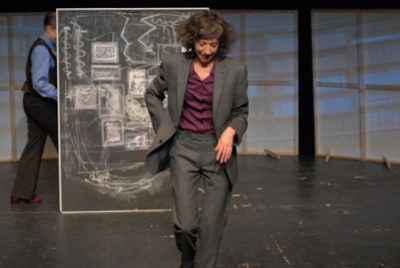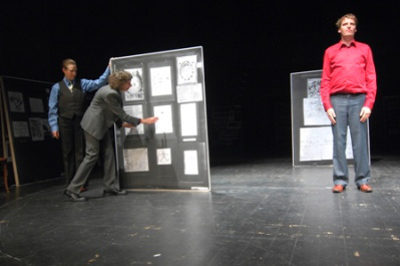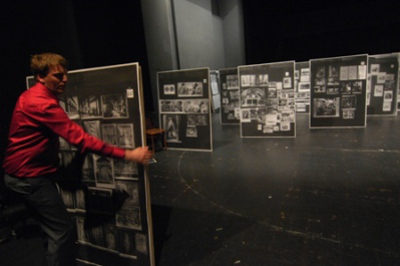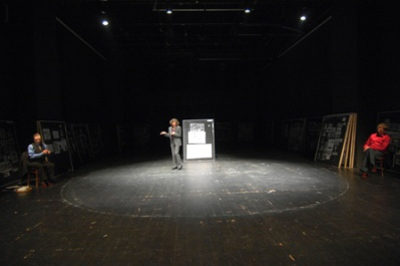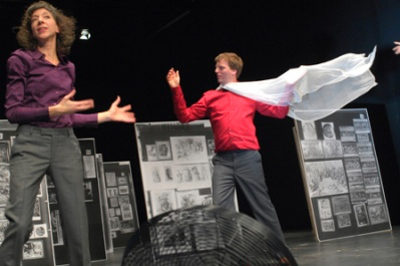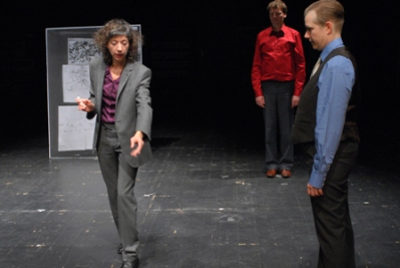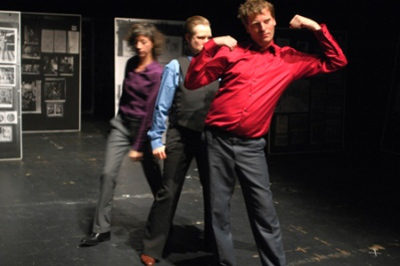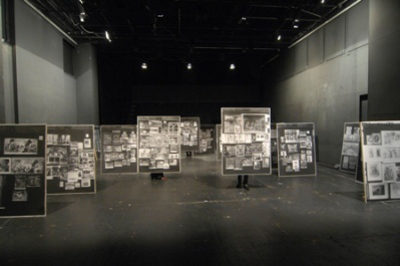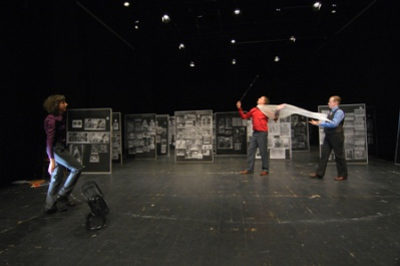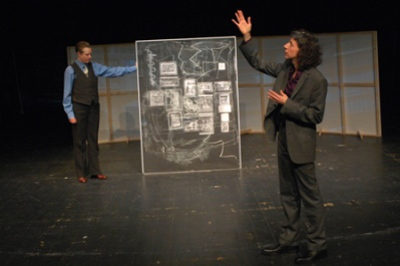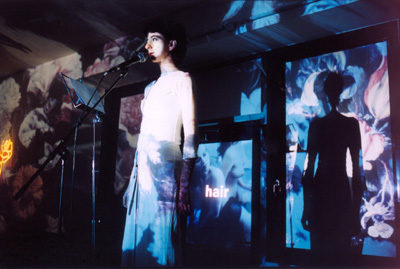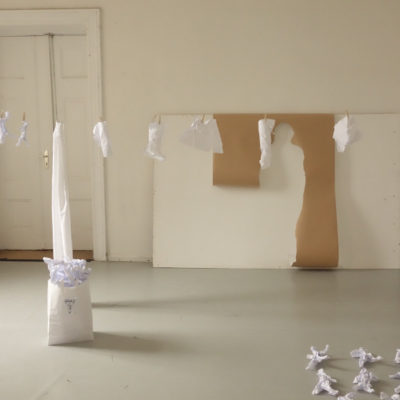Warburgs Memo
Concept: Lindy Annis
with: Lindy Annis, Antonia Baehr, Nicholas Bussmann
Premier: Hebbel-am-Ufer 3 Berlin, October 2008
80 minutes in English and German
Katja Wetzel, Set
Götz Dihlmann, technical Direction
Summer Banks, Production Assistance
Christina Runge + Katja Timmerberg, Productions management
Leidschatz, Denkraum, Eilsiegbringitte, Bewegtes Beiwerk, Siegerpathos, Muskelrhetorik, Orgiastische Massenergriffenheit, Harmonikalisches System, Magna Mater, Wissenschaftlerei, Gute Nachbarschaft, Pathosformel, Mnemosyne.
Lindy Annis presents a new work about the iconography of passion and the body-archive.
Starting at Aby Warburg’s Mnemosyne, Annis uses the art historian’s theories and methods to develope her own performative atlas investigating the survival of ancient culture in today’s world. Together with the dramaturg Antonia Baehr and the composer Nicholas Bussmann, she investigates the concept of the body as archive for memories (personal, collective and cultural) and iconic body gestures as the expression there of.
The reknowned art historian and theoretician Aby Warburg was born in 1866 as the first son and heir to an influential Jewish banking family in Hamburg, Germany. In 1904 Aby Warburg founded the archive and library, the „Kulturwissenschaftliche Bibliothek Warburg“. With his research into recurring images and forms, he created new methods of the study of iconography.
From 1924 until his death in 1929, Warburg worked on his Mnemosyne Atlas, in which he analysed the continuing presence of ancient culture in the iconic gesture language and image memory of European civilisation. Warburg took photographs of images, reproductions from books and visual materials from newspapers and/or daily life and attached them on wooden panels covered with black cloth, arranging them in such a way that they illustrated one or several thematic ideas. The perpetual metamorphosis of the panels was intentional and only halted by Warburg’s death in 1929.
After his death, the KBW came under increasing pressure as a Jewish institution in Nazi Germany and in 1933 it became necessary to move the library from Hamburg to London, where it remains today.
In Lindy Annis’ Warburg’s Memo the picture-panels (Bildtafeln) are the basis for staged panel-works (Bildtafel-Stücke). Expanded into life, they are translated from the visual into the verbal, gestural and performative form. Lecture, play-acting and guided tour show the way through Warburg’s intricate thought process. The audience moves through the theoretical ‘thought-space’ (Denkraum), making their way along his ‚pathos formulas’, swinging between the Apollonic and the Dyonisian, the intellectual and the magical, the past and the present day; between the memory fragments of Aby Warburg and Lindy Annis.
Supported by the Mayor of Berlin – Senatskanzlei – Kulturelle Angelegenheiten and the Fonds Darstellende Künste e.V., Bonn.
Special thanks to the Warburg Institute, London and the Warburg-Haus, Hamburg for their help and generous permission to use historical photographic images.

